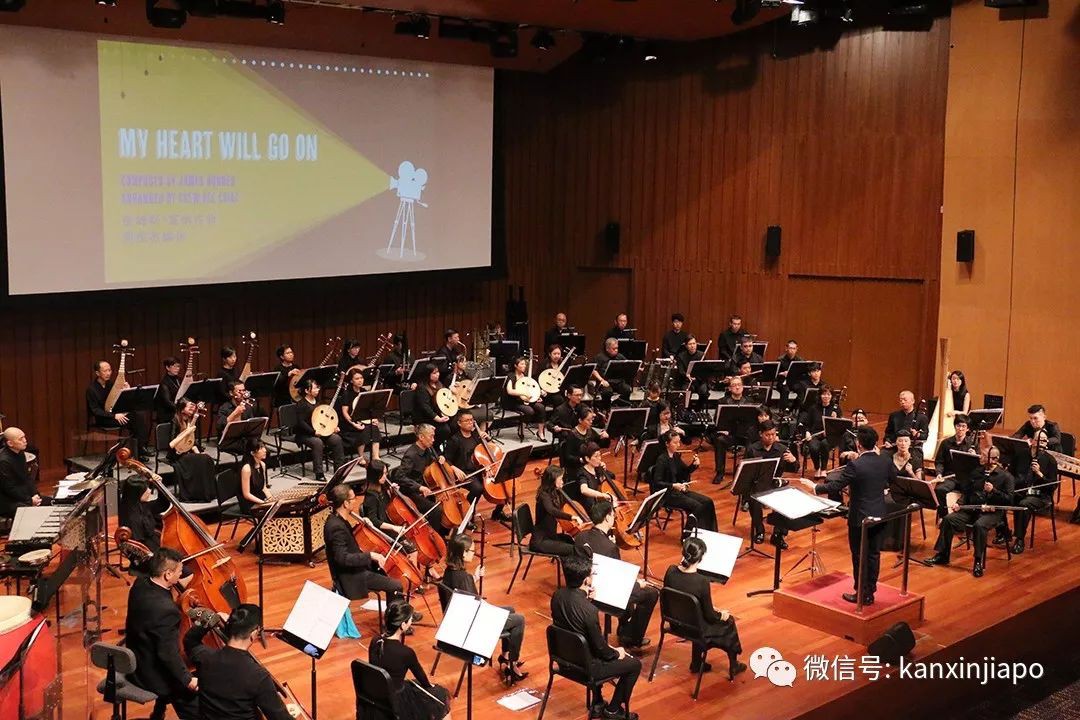【艺术探讨】新加坡官委议员何伟山国会演讲:该如何走出“艺术沙漠”?
 近年来,新加坡政府对本地艺术越来越上心,南洋艺术学院和拉萨尔艺术学院等院校办学红火,华艺节、妆艺大游行等融合了新加坡特色的艺术盛宴每年也在如火如荼地举行。新加坡官委议员何伟山在国会进行演讲时,谈到过去的成果时,又进一步提出发展本地艺术的建议。
近年来,新加坡政府对本地艺术越来越上心,南洋艺术学院和拉萨尔艺术学院等院校办学红火,华艺节、妆艺大游行等融合了新加坡特色的艺术盛宴每年也在如火如荼地举行。新加坡官委议员何伟山在国会进行演讲时,谈到过去的成果时,又进一步提出发展本地艺术的建议。

《艺通八达 艺心艺邻》 议长先生,自从国家艺术理事会推行了“新加坡艺术总蓝图”以后,我国的艺术工作者和艺术团体人数不断壮大,艺术领域发展蓬勃,全民共享艺术。在此基础上,我希望政府可以配合天时地利人和,更有效地整合资源 ,互利共享,进一步促进本地艺术团体生态的发展。为此,我有三个建议:1.艺术场所一站式服务、专业资源社会化共享让音乐室、舞蹈室和剧场工作室,聚集同一个屋檐下,观众到一地,即可观赏到各类的艺术表演,不仅便于选择,也利于互动和交流。以传统艺术为主题的史丹福艺术中心,吸引传统艺术团体进驻,为滑铁卢街注入浓厚的文化艺术气息。湘灵音乐社、鼎艺团、印度舞团和马来现代舞团等入驻中心。 ▲史丹福艺术中心去年9月,高级政务次长马炎庆宣布艺术资源中心网站,让自由艺术工作者可用资源,也提供两个共享合作空间。政府或可考虑,在音乐中心里建设室内乐音乐厅、隔音设备的琴房。在舞蹈和戏剧中心里,有自己的黑箱和舞蹈排练剧场,甚至设立共用舞美道具的储藏间供循环用途即环保有不浪费资源,推行一个“共享货舱”,收纳剧场的道具和布景。除了空间将得到更有效和可持续的利用,还有利于环保避免资源浪费,一举两得。 2. 重新探讨设立艺术电台和艺术频道主流媒体在推广不同层次的文化艺术方面,也有其可扮演的角色。因此我提议,重新探讨设立艺术电台和艺术电视频道。在1997年,国家艺术理事会建立了Passion 99.5FM,希望能支持新加坡音乐。不幸的是,因为经济情况不好,赞助和广告收入减少,它在2003年关闭。
▲史丹福艺术中心去年9月,高级政务次长马炎庆宣布艺术资源中心网站,让自由艺术工作者可用资源,也提供两个共享合作空间。政府或可考虑,在音乐中心里建设室内乐音乐厅、隔音设备的琴房。在舞蹈和戏剧中心里,有自己的黑箱和舞蹈排练剧场,甚至设立共用舞美道具的储藏间供循环用途即环保有不浪费资源,推行一个“共享货舱”,收纳剧场的道具和布景。除了空间将得到更有效和可持续的利用,还有利于环保避免资源浪费,一举两得。 2. 重新探讨设立艺术电台和艺术频道主流媒体在推广不同层次的文化艺术方面,也有其可扮演的角色。因此我提议,重新探讨设立艺术电台和艺术电视频道。在1997年,国家艺术理事会建立了Passion 99.5FM,希望能支持新加坡音乐。不幸的是,因为经济情况不好,赞助和广告收入减少,它在2003年关闭。  ▲新加坡现有的电台今时不同往日,文化、社区及青年部在2019年1月30日公布的《新加坡文化统计报告2018》总结了2017年本地文化活动的数据,艺术表演活动逐年增加,从2011年的约7700场,增加至2017年的超过9500场次。我认为,既然艺术活动已经大大受到大众的关注,因此有必要透过主流媒体传播讯息和咨询。除了传统媒介,这些电视电台的制作人也可考虑配合社交媒体,双管齐下,扩大交流和受众群的讯息传播。这对助推艺术事业的发展,提高民众的艺术审美水平,至关重要。 3. 延续艺术发展的重地 – 民众俱乐部与学校的合作伙伴关系民众俱乐部有很多不同年龄层、不同背景的居民加入,这里具备很好的普及推广艺术的条件,让邻里艺术牵手校园艺术 ,包括校友会艺术团体的成立都可促进多方的共享共赢。譬如:交响乐团、华乐团、舞蹈团、戏剧团体等, 民众俱乐部成为校园文化建设的延展和补充,继续为居民和艺术搭建优质的平台。只有团体之间相互切磋、合作、学习,他们才能继续擦出火花,让整个艺术领域更具活力,蓬勃发展,百家争鸣!
▲新加坡现有的电台今时不同往日,文化、社区及青年部在2019年1月30日公布的《新加坡文化统计报告2018》总结了2017年本地文化活动的数据,艺术表演活动逐年增加,从2011年的约7700场,增加至2017年的超过9500场次。我认为,既然艺术活动已经大大受到大众的关注,因此有必要透过主流媒体传播讯息和咨询。除了传统媒介,这些电视电台的制作人也可考虑配合社交媒体,双管齐下,扩大交流和受众群的讯息传播。这对助推艺术事业的发展,提高民众的艺术审美水平,至关重要。 3. 延续艺术发展的重地 – 民众俱乐部与学校的合作伙伴关系民众俱乐部有很多不同年龄层、不同背景的居民加入,这里具备很好的普及推广艺术的条件,让邻里艺术牵手校园艺术 ,包括校友会艺术团体的成立都可促进多方的共享共赢。譬如:交响乐团、华乐团、舞蹈团、戏剧团体等, 民众俱乐部成为校园文化建设的延展和补充,继续为居民和艺术搭建优质的平台。只有团体之间相互切磋、合作、学习,他们才能继续擦出火花,让整个艺术领域更具活力,蓬勃发展,百家争鸣! ▲新加坡华乐团享誉世界建设一个艺术生态,并非一朝一夕;我们不但要让文化艺术接地气,也要让新加坡的艺术界栽培更多的优秀艺术专才,艺通八达、 艺心艺邻!
▲新加坡华乐团享誉世界建设一个艺术生态,并非一朝一夕;我们不但要让文化艺术接地气,也要让新加坡的艺术界栽培更多的优秀艺术专才,艺通八达、 艺心艺邻!
以下是何伟山英文演讲全文:
Speaker Sir,The arts strive to enrich the individual, encourage self-expression, while at the same time seeking to reach out, communicate and bring people together. The National Arts Council (NAC) Arts and Culture Nodes at various venues island-wide energise and excite Singaporeans. A wide array of quality arts programmes, for people of all ages and walks of life, are available. With the SG Arts Plan in place, the arts scene has been thriving, as artists chart professional careers and arts groups grow in strength.I have three recommendations, to build a Sustainable and Vibrant Community Arts Ecosystem:1) To build under-one-roof performing arts housing for music, dance and theatre.Sharing resources; putting the same genre of performing arts under one roof. For example: different hubs that are specifically designed for the music, theatre or dance groups, will allow the groups to effectively share resources and rehearsal spaces. The Stamford Arts House is a multidisciplinary arts centre with a focus on Traditional Arts. Currently, the centre houses various professional arts companies of different arts form. The government can consider this: A shared acoustically treated recital hall for the orchestra/ensemble, a black box for theatre performances, dance theatre with treated flooring and height for dance companies. This re-energises the building, and audiences just need to visit one particular location to watch the performance of a particular art form.Earlier on in September 2019, SPS Baey Yam Keng announced that Arts freelancers will have an arts resource website, and will also have dedicated working spaces at Goodman Arts Centre and Stamford Arts Centre. In addition to this, perhaps we can also consider a central shared warehouse for the arts community, where props and sets can be stored, shared or reused. This is one of the ways we can do our part to save the Earth from climate change, reducing wastage and disposal issues.2) To reconsider and revisit the plan to reinstall the arts radio and TV Channel.Traditional media such as the radio and television still play an important role in sharing content, and informing the public. We used to have an arts radio station – Passion 99.5 FM. Back then, the NAC launched this radiao station on 31 December 1997, to increase awareness of the arts and provide the arts community with a public voice. It featured magazine programmes on arts and culture. However, the station was shut down in December 2003 because its listenership was “too small to attract sustained sponsorship and advertising revenue to cover its operating cost”.However, today, with the increasing number in arts event and attendance, we ought to deepen and further the reach of our performances and productions through the mainstream media. There is now larger number of performing arts events offered over the years. According to data released by the MCCY on 22 January 2019, the numbers have increased from around 7,700 in 2011 to more than 9,500 in 2017, Also, more than 11 million attended non-ticketed arts and cultural events in 2017, a rise of nearly 20 per cent from the year before and the highest turnout in seven years. The content creators for mainstream radio stations and TV channel can even work hand in hand with the social media team for audience development purposed and wider audience reach.3)To foster and further the establishment of community arts groups with school/institution alumni and studentsPartnership between schools/ institutions and community arts group establishes a vibrant and sustainable ecosystem. Community clubs can provide the space to support these alumni arts groups. With these arts groups housed in the CCs, they can regularly engage in activities and perform, contributing back to the larger community. The potential for working together between the arts groups is limitless. With more collaboration opportunities, this will encourage and inspire arts groups to reach the pinnacle of excellence. However, I understand that a few community clubs have closed down the arts groups housed in their venues. So where will all these groups go to?





















评论